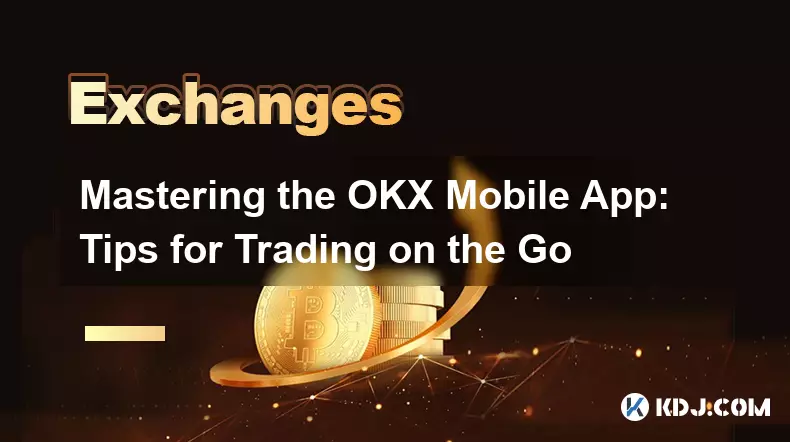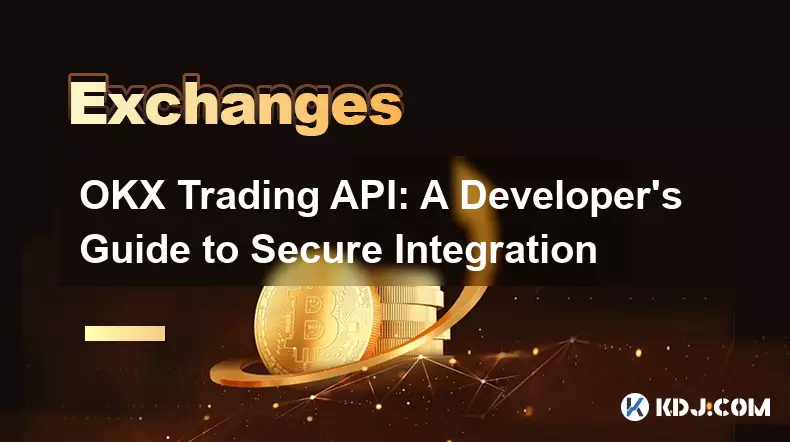-
 bitcoin
bitcoin $107015.826941 USD
-2.18% -
 ethereum
ethereum $3637.352324 USD
-5.18% -
 tether
tether $0.999831 USD
-0.02% -
 xrp
xrp $2.338078 USD
-6.23% -
 bnb
bnb $998.272150 USD
-6.97% -
 solana
solana $167.598257 USD
-10.12% -
 usd-coin
usd-coin $0.999863 USD
0.01% -
 tron
tron $0.282573 USD
-5.09% -
 dogecoin
dogecoin $0.169891 USD
-7.39% -
 cardano
cardano $0.557554 USD
-7.03% -
 hyperliquid
hyperliquid $39.914802 USD
-5.85% -
 chainlink
chainlink $15.414549 USD
-9.97% -
 bitcoin-cash
bitcoin-cash $510.361911 USD
-4.26% -
 ethena-usde
ethena-usde $0.999194 USD
-0.03% -
 stellar
stellar $0.282092 USD
-6.07%
Avoiding Liquidation on Bybit: Key Strategies for Margin Traders
On Bybit, liquidation occurs when your margin falls below maintenance levels, triggered by the mark price to prevent losses.
Nov 04, 2025 at 12:36 pm

Understanding Liquidation Mechanics on Bybit
1. Liquidation occurs when a trader’s margin balance falls below the maintenance margin required to keep a leveraged position open. On Bybit, this threshold is determined by the leverage used and the volatility of the asset. When the mark price reaches the liquidation price, the system automatically closes the position to prevent further losses.
2. Each futures contract has a specific maintenance margin rate, which varies depending on the level of leverage. Higher leverage reduces the buffer between entry price and liquidation price, increasing risk exposure significantly. Traders must be aware of these thresholds before opening any position.
3. The mark price, not the last traded price, determines whether liquidation triggers. This mechanism prevents manipulation and ensures fairness, but it also means that sudden spikes or drops in funding rates or index prices can accelerate liquidation risks unexpectedly.
4. Partial liquidations may occur in certain cases, particularly with larger positions. Instead of closing the entire position at once, Bybit might reduce part of it to bring the margin ratio back to acceptable levels, preserving some trading capital if market conditions reverse.
Set Appropriate Leverage Levels
1. High leverage amplifies both gains and losses. While 100x leverage may seem attractive for quick profits, it drastically narrows the price movement tolerance. A minor adverse swing can push the position into liquidation territory within seconds, especially in volatile markets like Bitcoin or altcoin futures.
2. Conservative traders often use 5x to 10x leverage to maintain breathing room. This allows them to withstand short-term volatility without being prematurely exited from their trades. Lower leverage increases the distance between entry and liquidation price, offering more time to react.
3. Adjusting leverage based on market conditions is crucial. During high-volatility events such as macroeconomic announcements or exchange outages, reducing leverage helps mitigate unexpected slippage and sharp price gaps that could trigger automatic closures.
4. Using Bybit’s leverage slider responsibly enables dynamic adjustment even after entering a position. Increasing size without adjusting leverage accordingly can silently erode margin safety, making proactive monitoring essential.
Employ Risk Management Tools Effectively
1. Stop-loss orders are fundamental tools for limiting downside exposure. Placing a stop-loss below key support (for longs) or above resistance (for shorts) ensures that losses are capped before reaching critical levels. These orders should reflect technical analysis and volatility metrics like ATR.
2. Take-profit levels help secure profits and reduce emotional decision-making. By automating exits at predefined targets, traders avoid holding winning positions too long and risking reversal-based drawdowns that threaten overall portfolio health.
3. Position sizing directly influences liquidation resilience. Opening smaller positions relative to available margin provides a larger cushion against adverse moves. Many professional traders follow the 1%–2% risk rule per trade to preserve capital over time.
4. Utilizing Bybit’s trailing stop feature allows dynamic protection during strong trends. As price moves favorably, the stop adjusts upward (or downward), locking in profits while still allowing room for normal fluctuations.
Monitor Funding Rates and Market Sentiment
1. High positive funding rates indicate excessive long positioning, often preceding corrections. Conversely, deeply negative rates suggest overcrowded shorts, increasing the likelihood of short squeezes. Awareness of these imbalances helps anticipate potential liquidation cascades.
2. Sudden shifts in open interest combined with price stagnation can signal impending breakouts or breakdowns. Rising open interest alongside strong directional movement confirms trend validity; stagnant price with growing open interest warns of accumulating risk ahead.
3. Whale activity detection tools integrated into third-party analytics platforms can highlight large liquidation zones. Clusters of big positions near certain price levels act as magnets, often triggering rapid moves when those areas are tested.
4. Social sentiment from crypto communities and news outlets impacts short-term price action. Overly bullish narratives can inflate leverage usage across retail traders, setting the stage for mass liquidations if reality fails to meet expectations.
Frequently Asked Questions
What happens to my funds after a full liquidation?After full liquidation, the remaining equity—after covering losses—is returned to your wallet minus the insurance clearing fee. In extreme cases where losses exceed margin, the Insurance Fund covers the deficit, and no additional charges apply to the user.
Can I receive alerts before my position gets liquidated?Yes, Bybit offers customizable margin call notifications via email and in-app alerts. Users can set warning thresholds at 50%, 75%, or 90% of their risk level to take corrective actions before liquidation occurs.
Does increasing margin mid-trade prevent liquidation?Adding margin manually improves the margin ratio and pushes the liquidation price further away from the current mark price. This action can rescue a vulnerable position, provided it's done before the system enforces closure.
How does cross-margin mode affect liquidation risk?In cross-margin mode, all available balance in the wallet backs the position, increasing the effective margin. However, this also means the entire account is at risk if the market moves sharply against the trade, potentially leading to total account wipeout.
Disclaimer:info@kdj.com
The information provided is not trading advice. kdj.com does not assume any responsibility for any investments made based on the information provided in this article. Cryptocurrencies are highly volatile and it is highly recommended that you invest with caution after thorough research!
If you believe that the content used on this website infringes your copyright, please contact us immediately (info@kdj.com) and we will delete it promptly.
- Backend-for-Frontend, Token Theft, and Security: Navigating the Treacherous Waters of Modern Web Apps
- 2025-11-05 05:10:01
- Crypto Carnage: Bitcoin's $200B Wipeout – What's Next?
- 2025-11-05 04:30:16
- Sequans, Bitcoin, and Debt Reduction: A NYC Perspective on a Bold Move
- 2025-11-05 03:50:12
- XRP Price Wobbles: Death Cross Looms as Ripple Token Navigates Choppy Waters
- 2025-11-05 04:10:01
- Altcoins, Perpetual Tokens, and ETH Price: Navigating the Crypto Current
- 2025-11-05 03:55:01
- Tether's Triumph: $10 Billion Profits and a Treasury Milestone
- 2025-11-05 03:55:12
Related knowledge

Common Mistakes to Avoid on OKX: A Guide for New Traders
Nov 04,2025 at 03:37pm
Understanding the Interface Before Trading1. New traders often jump into placing orders without fully exploring the OKX platform layout. Taking time t...

OKX TradingView Integration: A Guide to Advanced Chart Analysis
Nov 02,2025 at 03:37am
OKX and TradingView: Bridging the Gap for Professional Traders1. OKX, one of the leading cryptocurrency exchanges, has integrated with TradingView to ...

Mastering the OKX Mobile App: Tips for Trading on the Go
Nov 05,2025 at 01:19am
Streamlined Navigation for Efficient Trading1. The OKX mobile app features a clean and intuitive interface that allows traders to access key functions...

How to Transfer Crypto to Your OKX Wallet: A Secure Tutorial
Nov 04,2025 at 11:39pm
Understanding the Basics of Crypto Transfers to OKX1. Before initiating any transfer, it’s essential to understand that OKX supports a wide range of c...

OKX Perpetual Swaps: A Comprehensive Trading Strategy Guide
Nov 04,2025 at 07:05pm
Understanding OKX Perpetual Swaps Mechanics1. Perpetual swaps on OKX are derivative contracts that allow traders to speculate on cryptocurrency price ...

OKX Trading API: A Developer's Guide to Secure Integration
Nov 02,2025 at 01:01am
Understanding the OKX Trading API Infrastructure1. The OKX Trading API is built on REST and WebSocket protocols, enabling developers to access real-ti...

Common Mistakes to Avoid on OKX: A Guide for New Traders
Nov 04,2025 at 03:37pm
Understanding the Interface Before Trading1. New traders often jump into placing orders without fully exploring the OKX platform layout. Taking time t...

OKX TradingView Integration: A Guide to Advanced Chart Analysis
Nov 02,2025 at 03:37am
OKX and TradingView: Bridging the Gap for Professional Traders1. OKX, one of the leading cryptocurrency exchanges, has integrated with TradingView to ...

Mastering the OKX Mobile App: Tips for Trading on the Go
Nov 05,2025 at 01:19am
Streamlined Navigation for Efficient Trading1. The OKX mobile app features a clean and intuitive interface that allows traders to access key functions...

How to Transfer Crypto to Your OKX Wallet: A Secure Tutorial
Nov 04,2025 at 11:39pm
Understanding the Basics of Crypto Transfers to OKX1. Before initiating any transfer, it’s essential to understand that OKX supports a wide range of c...

OKX Perpetual Swaps: A Comprehensive Trading Strategy Guide
Nov 04,2025 at 07:05pm
Understanding OKX Perpetual Swaps Mechanics1. Perpetual swaps on OKX are derivative contracts that allow traders to speculate on cryptocurrency price ...

OKX Trading API: A Developer's Guide to Secure Integration
Nov 02,2025 at 01:01am
Understanding the OKX Trading API Infrastructure1. The OKX Trading API is built on REST and WebSocket protocols, enabling developers to access real-ti...
See all articles










































































